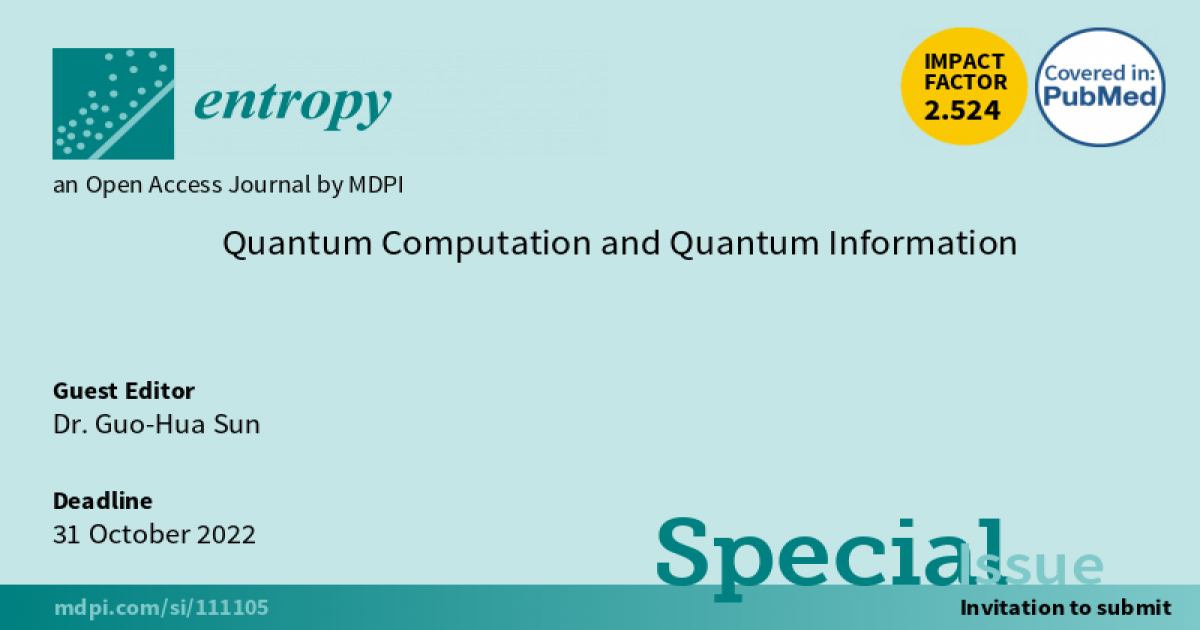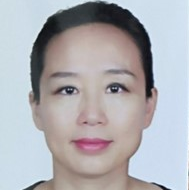Quantum Computation and Quantum Information
A special issue of Entropy (ISSN 1099-4300). This special issue belongs to the section "Quantum Information".
Deadline for manuscript submissions: closed (31 October 2022) | Viewed by 30649

Special Issue Editor
Special Issue Information
Dear Colleagues,
Since the 1980s, the scientific and technological development of quantum computation and quantum information has been progressing towards a thriving goal: to manipulate particles, taking advantage of the great power shown by quantum phenomena to achieve extraordinary computational power as well as secure and efficient communication. Sparks light up the path with obstacles, such as well-known algorithms, Shor´s factorization algorithm, Grover´s search algorithm and the others. Nevertheless, there is still a lack hardware and software needed to reach concrete applications, but this is precisely why we have taken this opportunity to explore this interdisciplinary field to discover new findings, with hope, enthusiasm, hard work, unlimited imagination, rigorous demonstrations, simulations, experimental design and testing, etc.
Entropy has shown importance in different fields of science, such as thermodynamics, information theory and many other branches; recently, Shannon entropy and von Neumann entropy were also used to examine the behavior of quantum entangled systems.
Research work showing applications and an improved understanding of the meaning of entropy in quantum computation and quantum information are welcome in this Special Issue, but any original research falling within the mentioned scope is welcome too. I hope that this Special Issue will provide a good platform for showcasing your work.
Dr. Guo-Hua Sun
Guest Editor
Manuscript Submission Information
Manuscripts should be submitted online at www.mdpi.com by registering and logging in to this website. Once you are registered, click here to go to the submission form. Manuscripts can be submitted until the deadline. All submissions that pass pre-check are peer-reviewed. Accepted papers will be published continuously in the journal (as soon as accepted) and will be listed together on the special issue website. Research articles, review articles as well as short communications are invited. For planned papers, a title and short abstract (about 250 words) can be sent to the Editorial Office for assessment.
Submitted manuscripts should not have been published previously, nor be under consideration for publication elsewhere (except conference proceedings papers). All manuscripts are thoroughly refereed through a single-blind peer-review process. A guide for authors and other relevant information for submission of manuscripts is available on the Instructions for Authors page. Entropy is an international peer-reviewed open access monthly journal published by MDPI.
Please visit the Instructions for Authors page before submitting a manuscript. The Article Processing Charge (APC) for publication in this open access journal is 2600 CHF (Swiss Francs). Submitted papers should be well formatted and use good English. Authors may use MDPI's English editing service prior to publication or during author revisions.
Keywords
- entropy
- quantum algorithm
- quantum teleportation
- quantum key distribution
- quantum computation
- quantum information
Benefits of Publishing in a Special Issue
- Ease of navigation: Grouping papers by topic helps scholars navigate broad scope journals more efficiently.
- Greater discoverability: Special Issues support the reach and impact of scientific research. Articles in Special Issues are more discoverable and cited more frequently.
- Expansion of research network: Special Issues facilitate connections among authors, fostering scientific collaborations.
- External promotion: Articles in Special Issues are often promoted through the journal's social media, increasing their visibility.
- Reprint: MDPI Books provides the opportunity to republish successful Special Issues in book format, both online and in print.
Further information on MDPI's Special Issue policies can be found here.






